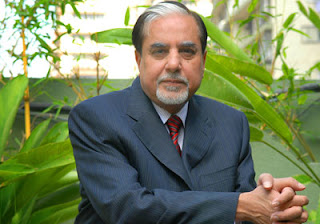Managing a business is just like managing the economy of the country. There is income, expenditure; sales other things that if not managed properly might heavy losses. Ciggy chacha tells us about how he manages his business.
Ciggy chacha stays behind the Matunga petrol pump near Ruia College. He tells the story that his current house he brought at just Rs.300/- but 36 years ago!
He has a family living in Veloor, Tamilnadu. His two sons are doing well in their life. One is employed in the Indian Railway and the other one has completed his graduation and wants to pursue further.
This interesting name is given to him by the students of Ruia and Podar colleges. He has a 3-wheeler-bicycle in which he sells all types of cigarettes, bidis, Paan Supari, bakery biscuits, Agarbattis, candles, weighing machine, car washing clothes and so on and so forth.
This 62 year old Ciggy Chacha stays alone in a city. His family wants him to come back. But he says, “it’s not the end I m still young...Wont retire that early.” Now he has a mobile, so his loyal customers in Dadar-Matunga area call him and place their orders of packs of cigarettes and other products. This customers are from IES King George, Hindu colony, Dadar swaminarayan, Ruia Naka, Podar katta, Wellingkers and Matunga stn road.
Some people call him ‘cycle-chacha’, some call ‘ciggy-chacha’. He is very famous amongst students in this entire area mainly because of his weird cycle which has everything. Literally, other than the products it’s got tube lights, radio, fan and television also!
When asked about the past, he went in to flash back. Ciggy Chaha came to Mumbai in the year 1976 at the age of 14. He started working in a hotel at Mohammad Ali Road. He worked in Chor Bazar for 7 years. He was working at retail market at Masjid Bunder. One day he met with an accident and his left leg got hurt badly. Doctor advised him not to take strain on the left leg. His colleague told him about one guy in Pune who used to sell through such cycle. Chacha loved the concept and brought it for 600 Rupees. Since from last 12 years Chacha and his Cycle is serving their customers in Dadar-Matunga area without a single holiday!
He gets all the goods from a wholesale shop in Parel. On each Cigarette which is of 5Rs he gets 1 Rupee on Bidi packets (each 10Rs) he gets 3Rs. He sells Agarbattis near Swami Narayan Temple and at Ayyappa temple in the morning. Pan-Supari Products make more money. Many Taxi drivers buy biscuits from him. He sells car washing clothes at Rs. 120 per dozen. He tells one incident from 20 years back when Mr Amitabh Bacchan stopped his car at Dadar TT when saw chacha and purchased clothes from him for Rs 300! At the end of the day he gets approx 120-150 Rs. He himself cooks food or sometimes just eat some snacks like vada pav.
There are some customers who borrow items on credit from him and return it with delay. Police take cigarettes pan masala and just don’t pay him. But Chacha is okay with it.
He says,
"Kahaan yeh sab leke ja na hai... Aadami nanga aata hai aur nanga hi jata hai...Kayamat k din Allah ko kaise muh dikhana hai yeh hamesha soch k jee leta hu !!!"












